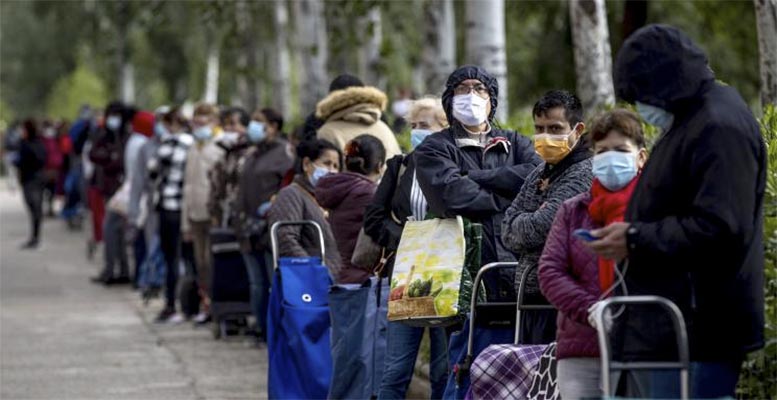Housing has become a “great bottomless pit” for three million families in Spain, who have to spend more than six out of every ten euros (63 %) on household expenses, supplies and food. According to the report “Income and expenses: an equation that conditions our quality of life” presented this Tuesday by Cáritas Española and the Foessa Foundation, 16.8% of families fall below the severe poverty threshold once housing and basic supplies have been paid for, explained researcher Daniel Rodríguez.
More and more families are forced to resort to formulas such as subletting rooms, which 1.2 million households do, or living in insecure housing. Some 4.2 million are in shared flats, rented without a contract or even in a situation of threatened eviction.
In addition, the number of families living in inadequate housing – which does not meet the minimum decent conditions – has experienced “a worrying increase” from 25% in 2018 to 30% in 2021 and reaching 5.6 million families, the analysis warns.
“Many families face a kind of insurmountable dilemma: the difficult choice between living in non-dignified conditions, such as sharing cramped spaces, dealing with overcrowding and enduring poor living conditions, or, on the other hand, facing economic asphyxiation marked by overwhelming financial stress, which in turn can seriously affect health, especially mental health,” explained Foessa researcher Daniel Rodriguez.
Economic recovery turns its back on the poorest households
Although incomes in Spain have increased by 11% since 2008, the rise in prices in recent months has increased household spending by 30%. According to the research, this disparity is even more pronounced among the poorest households, which have seen their incomes grow by just 0.5%. While families with the lowest incomes spend more than six out of every 10 euros on housing, utilities and food, those with the highest incomes spend four out of every 10 euros.
The difference between the growth in income and the increase in expenditure, together with the high percentage of working poor (11.7%) and the low coverage and protective intensity of the minimum income (only 44% of the population in severe poverty receive it), is overwhelming the capacity of many families who were already in a situation of vulnerability, warns the analysis.
In fact, the percentage of households in severe material poverty now stands at 8.1 % of the population (3.8 million people), it notes.





